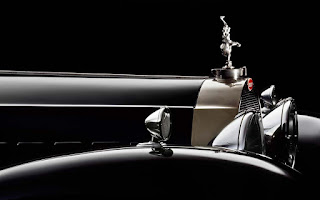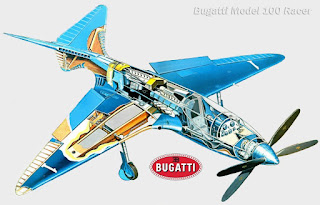The History of Bugatti Part 11- Revival- autosmithcar.com
Italian entrepreneur Romano Artioli acquired the Bugatti brand in 1987, and established Bugatti Automobili S.p.A.. Artioli commissioned architect Giampaolo Benedini to design the factory which was built in Campogalliano, Modena, Italy. Construction of the plant began in 1988, alongside the development of the first model, and it was inaugurated two years later—in 1990.[9]
By 1989 the plans for the new Bugatti revival were presented by Paolo Stanzani and Marcello Gandini, designers of the Lamborghini Miura and Lamborghini Countach. The first production vehicle was the Bugatti EB110 GT. It used a carbon-fibre-reinforced polymer chassis, a 3.5-litre, 5-valve per cylinder, quad-turbocharged 60° V12 engine, a six-speed gearbox, and four-wheel drive.
Famed racing car designer Mauro Forghieri served as Bugatti's technical director from 1992 through 1994.
On 27 August 1993, through his holding company, ACBN Holdings S.A. of Luxembourg, Romano Artioli purchased Lotus Carsfrom General Motors. Plans were made to list Bugatti shares on international stock exchanges.
Bugatti presented a prototype large saloon called the EB112 in 1993.
Perhaps the most famous Bugatti EB110 owner was seven-time Formula One World Champion racing driver Michael Schumacher who purchased an EB110 in 1994. Schumacher sold his EB110, which had been repaired after a severe 1994 crash, to Modena Motorsport, a Ferrari service and race preparation garage in Germany.
By the time the EB110 came to market, the North American and European economies were in recession. Poor economic conditions forced the company to fail and operations ceased in September 1995. A model specific to the US market called the "Bugatti America" was in the preparatory stages when the company ceased operations.
Bugatti's liquidators sold Lotus Cars to Proton of Malaysia. German firm Dauer Racing purchased the EB110 licence and remaining parts stock in 1997 in order to produce five more EB110 SS vehicles. These five SS versions of the EB110 were greatly refined by Dauer. The Campogalliano factory was sold to a furniture-making company, which subsequently collapsed before moving in, leaving the building unoccupied.[10] After Dauer stopped producing cars in 2011, Toscana-Motors GmbH of Germany purchased the remaining parts stock from Dauer.
I never correlated Lotus, maybe I should have, will dig deeper for the blog into it..that would be another one of my favorite exotic cars.
autosmithcar.com




Comments
Post a Comment